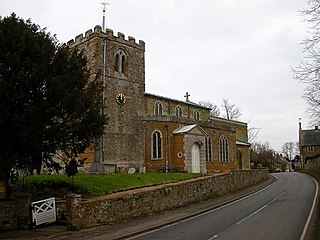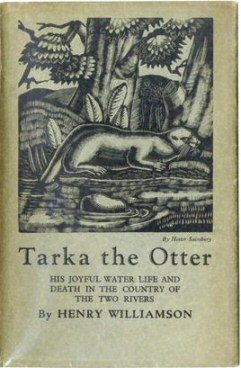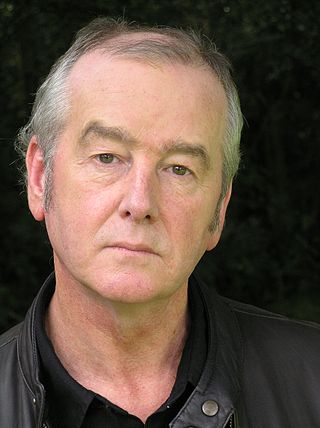A badger is any of several species of short-legged, heavy-set carnivores in the weasel family.
This article contains information about the literary events and publications of 1942.
BB, Bb, or similar, may refer to:
Sir Quentin Saxby Blake, is an English cartoonist, caricaturist, illustrator and children's writer. He has illustrated over 300 books, including 18 written by Roald Dahl, which are among his most popular works. For his lasting contribution as a children's illustrator he won the biennial international Hans Christian Andersen Award in 2002, the highest recognition available to creators of children's books. From 1999 to 2001, he was the inaugural British Children's Laureate. He is a patron of the Association of Illustrators.

Lamport is a village and civil parish in West Northamptonshire, England. The village is on the A508, about 8 miles (13 km) south of Market Harborough and 8 miles (13 km) north of Northampton. Nearby is Lamport Hall. At the time of the 2001 census, the parish's population was 207 people, including Hanging Houghton and increasing to 225 at the 2011 Census.

Tarka the Otter: His Joyful Water-Life and Death in the Country of the Two Rivers is a 1927 novel by English writer Henry Williamson, first published by G.P. Putnam's Sons with an introduction by the Hon. Sir John Fortescue. It won the Hawthornden Prize in 1928, and has never been out of print since its first publication.

David Almond is a British author who has written many novels for children and young adults from 1998, each one receiving critical acclaim.

Richard Stuart Walker was an English angler.
Alison Jane Uttley Litt.D., néeTaylor, was an English writer of over 100 books. She is best known for a children's series about Little Grey Rabbit and Sam Pig. She is also remembered for a pioneering time slip novel for children, A Traveller in Time, about the imprisoned Mary, Queen of Scots.

Cyril Walter Hodges was an English artist and writer best known for illustrating children's books and for helping to recreate Elizabethan theatre. He won the annual Greenaway Medal for British children's book illustration in 1964.
Michael Foreman is a British author and illustrator, one of the best-known and most prolific creators of children's books. He won the 1982 and 1989 Kate Greenaway Medals for British children's book illustration and he was a runner-up five times.

Gordon Frederick Browne was an English artist and a prolific illustrator of children's books in the late 19th century and early 20th century. He was a meticulous craftsman and went to a great deal of effort to ensure that his illustrations were accurate. He illustrated six or seven books a year in addition to a huge volume of magazine illustration.

Ronald Mathias Lockley was a Welsh ornithologist and naturalist. He wrote over fifty books on natural history, including a study of shearwaters, and the book The Private Life of the Rabbit, which was used in the development of his friend Richard Adams's children's book Watership Down.

Bill Badger and the Pirates is a children's novel with a canal-side setting, written and illustrated in 1960 by the prolific author Denys Watkins-Pitchford, who wrote under the pseudonym "BB".
This is a list of 762 books by Enid Blyton (1897–1968), an English children's writer who also wrote under the pseudonym of Mary Pollock. She was one of the most successful children's storytellers of the 20th century.

Brendon Chase is a children's novel by Denys Watkins-Pitchford, writing as 'BB'. It was published in 1944 but is set at an earlier date. The novel is about three boys living wild in an English forest. It was later made into a 13-part TV serial and shown on ITV from 31 December 1980 to 25 March 1981. The series was also shown in many other European countries and in the United States.

The Little Grey Men: A story for the young in heart is a children's fantasy novel written by Denys Watkins-Pitchford under the pen name "BB" and illustrated by the author under his real name. It was first published by Eyre & Spottiswoode in 1942 and it has been reissued several times. Set in the English countryside, it features the adventures of four gnomes who may be the last of their race. At the same time it features the countryside during three seasons of the year.
Little grey or little gray may refer to:
The Muckle Hart of Benmore was the name given to a red deer stag that was stalked (hunted) by the 19th-century naturalist and hunter Charles William George St John. In his book Short Sketches of the Wild Sports and Natural History of the Highlands, he described the continuous hunt of the stag for six days and five nights, culminating in its dramatic demise on 1 October 1833. St John's account of the stalk was widely republished, and the deer has been described as "the most famous red stag to be recorded in the annals of British sport".








